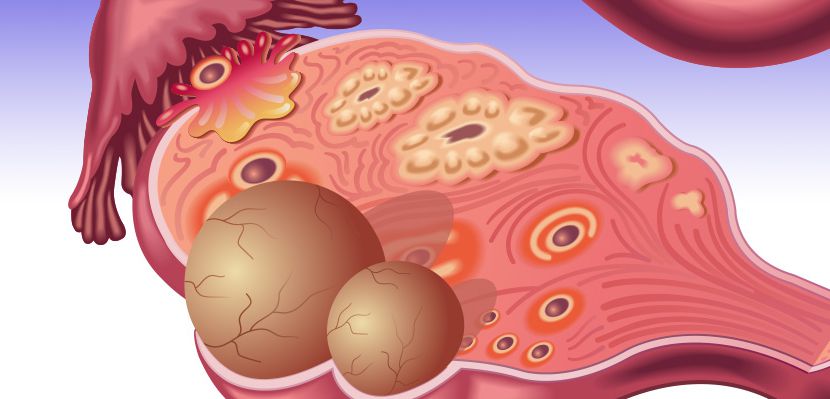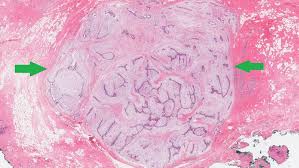
1. Understanding Benign Tumors
Benign tumors are typically composed of normal, healthy cells that grow uncontrollably, but without the ability to invade surrounding tissues or metastasize. They can develop in nearly any part of the body, including soft tissues, bones, and organs, and can vary significantly in size, shape, and symptoms. Some of the most common types of benign tumors include:
- Lipomas (fatty tissue growths)
- Fibromas (fibrous tissue growths)
- Adenomas (glandular tissue growths)
- Hemangiomas (blood vessel growths)
- Myomas (muscle tissue growths)
Although benign tumors are generally harmless, their presence can lead to physical discomfort, cosmetic issues, or pressure on surrounding organs and tissues, depending on their location.
2. When is Surgical Excision Needed?
Not all benign tumors require surgical removal. In some cases, small or asymptomatic benign tumors may be monitored over time through regular check-ups to ensure they do not grow or cause any complications. However, surgery may be recommended under the following circumstances:

- Pain or discomfort: When a benign tumor compresses surrounding tissues or organs, it can cause pain or a feeling of pressure, necessitating removal.
- Aesthetic concerns: Tumors that are located in visible areas of the body, such as the face, neck, or hands, may be removed for cosmetic reasons.
- Potential for complications: Some benign tumors, if left untreated, can lead to complications such as obstruction of bodily functions (e.g., digestive or urinary tract).
- Uncertainty of diagnosis: In certain cases, a benign tumor may be difficult to differentiate from a malignant one, and removal is necessary to obtain a definitive diagnosis and rule out cancer.
3. The Excision Process: Step-by-Step
The surgical removal of benign tumors, or excision, is typically performed under local or general anesthesia, depending on the tumor’s size, location, and the patient’s overall health. The goal of the procedure is to remove the entire tumor along with a small margin of surrounding tissue to reduce the risk of recurrence. Here’s an overview of how the excision process works:
Pre-Surgical Preparation
Before the surgery, the patient will undergo a thorough evaluation, which may include:
- Physical examination: The surgeon will assess the tumor’s size, location, and any related symptoms.
- Imaging studies: Imaging techniques such as ultrasound, CT scans, or MRI may be used to gather detailed information about the tumor’s structure and its relationship with surrounding tissues.
- Blood tests: Blood work may be done to assess the patient’s overall health and to check for any underlying conditions that could affect the surgery.
- Anesthesia consultation: The anesthesiologist will determine the appropriate anesthesia based on the procedure’s requirements and the patient’s health status.
Surgical Procedure
- Anesthesia: The patient will either receive local anesthesia, which numbs only the area around the tumor, or general anesthesia, which puts the patient to sleep during the surgery. The choice of anesthesia depends on factors such as the tumor’s location, the patient’s preference, and the complexity of the procedure.
- Incision: Once the area is numb or the patient is asleep, the surgeon will make an incision over the tumor. The size of the incision depends on the tumor’s size and location. In some cases, smaller tumors may require only a small incision, while larger tumors may necessitate a more extensive incision.
- Tumor Removal: The surgeon will carefully dissect the tissue to remove the entire tumor. In some cases, the tumor may be deeply embedded within surrounding tissues, which requires extra precision to ensure that it is completely excised. The surgeon will also remove a small margin of healthy tissue around the tumor to minimize the chances of recurrence.
- Closure: After the tumor has been removed, the surgeon will close the incision using sutures, staples, or adhesive strips. The method of closure will depend on the size and location of the incision and the surgeon’s preferences. If needed, drainage tubes may be placed temporarily to remove any excess fluid or blood.
- Post-Operative Care: After the surgery, the patient will be monitored in a recovery room until the effects of anesthesia wear off. The patient may be instructed on how to care for the incision site, manage any pain, and when to follow up for further evaluation.
4. Risks and Potential Complications
Like any surgical procedure, the excision of benign tumors carries certain risks, although these are generally low. Common risks associated with tumor excision include:

- Infection: There is a small risk of infection at the surgical site. To minimize this risk, the surgeon will take care to maintain a sterile environment during the procedure, and the patient may be prescribed antibiotics.
- Bleeding: Some bleeding is normal during surgery, but excessive bleeding may require additional intervention. Surgeons take steps to control bleeding during the procedure.
- Scarring: Surgical excision typically results in scarring. The size and appearance of the scar will depend on the incision size and the location of the tumor. Surgeons make efforts to minimize scarring, particularly in visible areas.
- Recurrence: Although rare, some benign tumors may recur after surgery if the tumor was not fully excised or if the surrounding tissue was not adequately removed.
5. Recovery After Benign Tumor Excision
After the excision procedure, the patient will need to follow a set of post-operative care instructions to ensure proper healing. The recovery period varies based on the tumor’s location and the complexity of the surgery. Here are some general guidelines for post-operative care:
- Rest and activity restrictions: Patients may be advised to rest and avoid strenuous physical activity for a certain period after the surgery to allow the incision to heal.
- Pain management: Mild to moderate pain is common after surgery, and patients may be prescribed pain medications to manage discomfort.
- Wound care: The incision site should be kept clean and dry. Patients may need to change dressings or apply topical ointments as directed by the surgeon.
- Follow-up appointments: The surgeon will schedule follow-up visits to monitor the healing process, remove sutures or staples, and ensure there are no signs of complications.
6.The Importance of Timely Benign Tumor Excision
In summary, the surgical removal of benign tumors is a safe and effective procedure that can alleviate symptoms, prevent complications, and provide peace of mind. Excision is typically recommended when a benign tumor is causing discomfort, cosmetic concerns, or uncertainty regarding diagnosis. By understanding the process of excision and following post-operative care guidelines, patients can recover successfully and resume their normal activities.
If you are considering surgery for a benign tumor, it is essential to consult with a qualified healthcare provider who can guide you through the process, answer any questions you may have, and provide the best treatment plan tailored to your needs.
